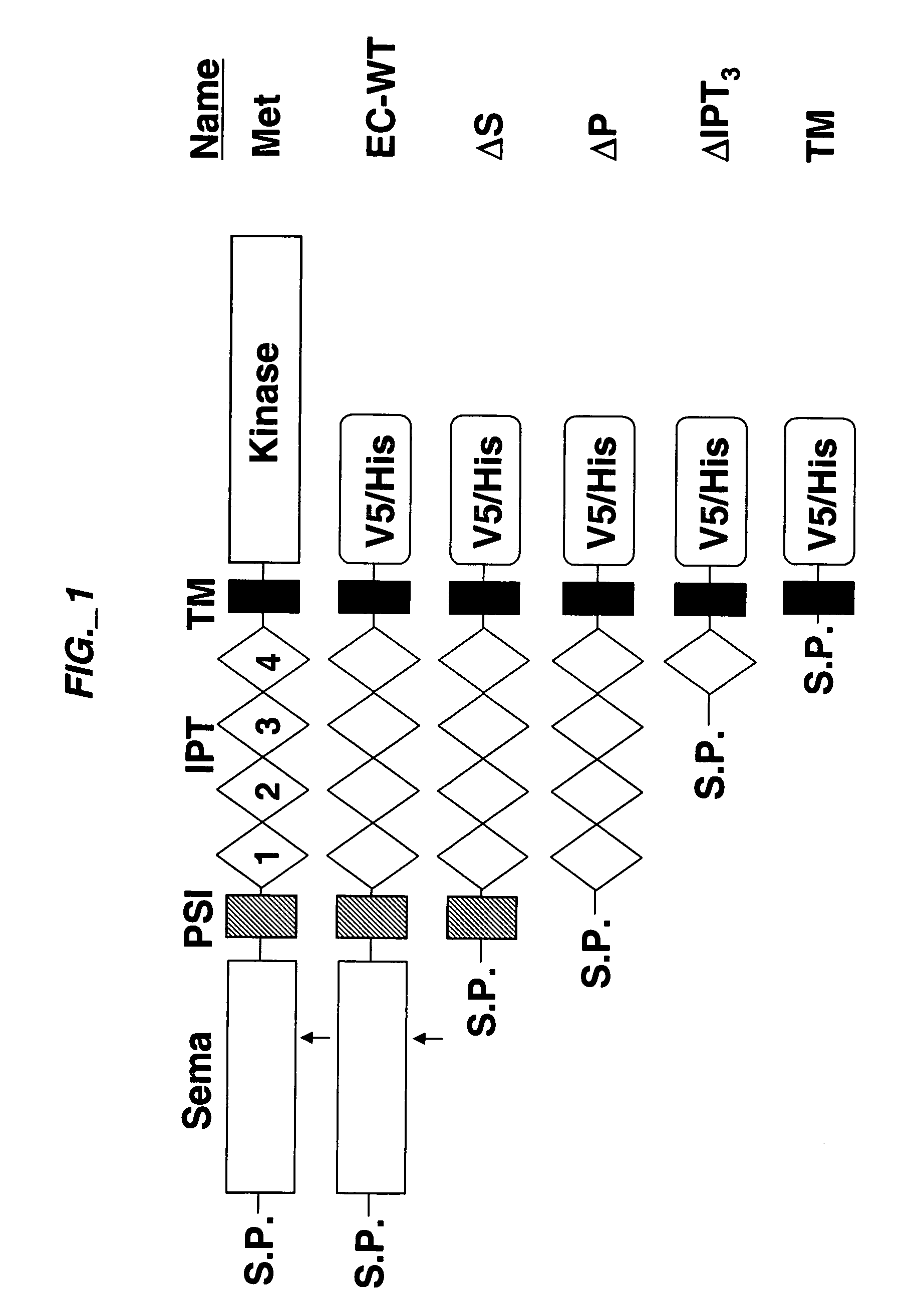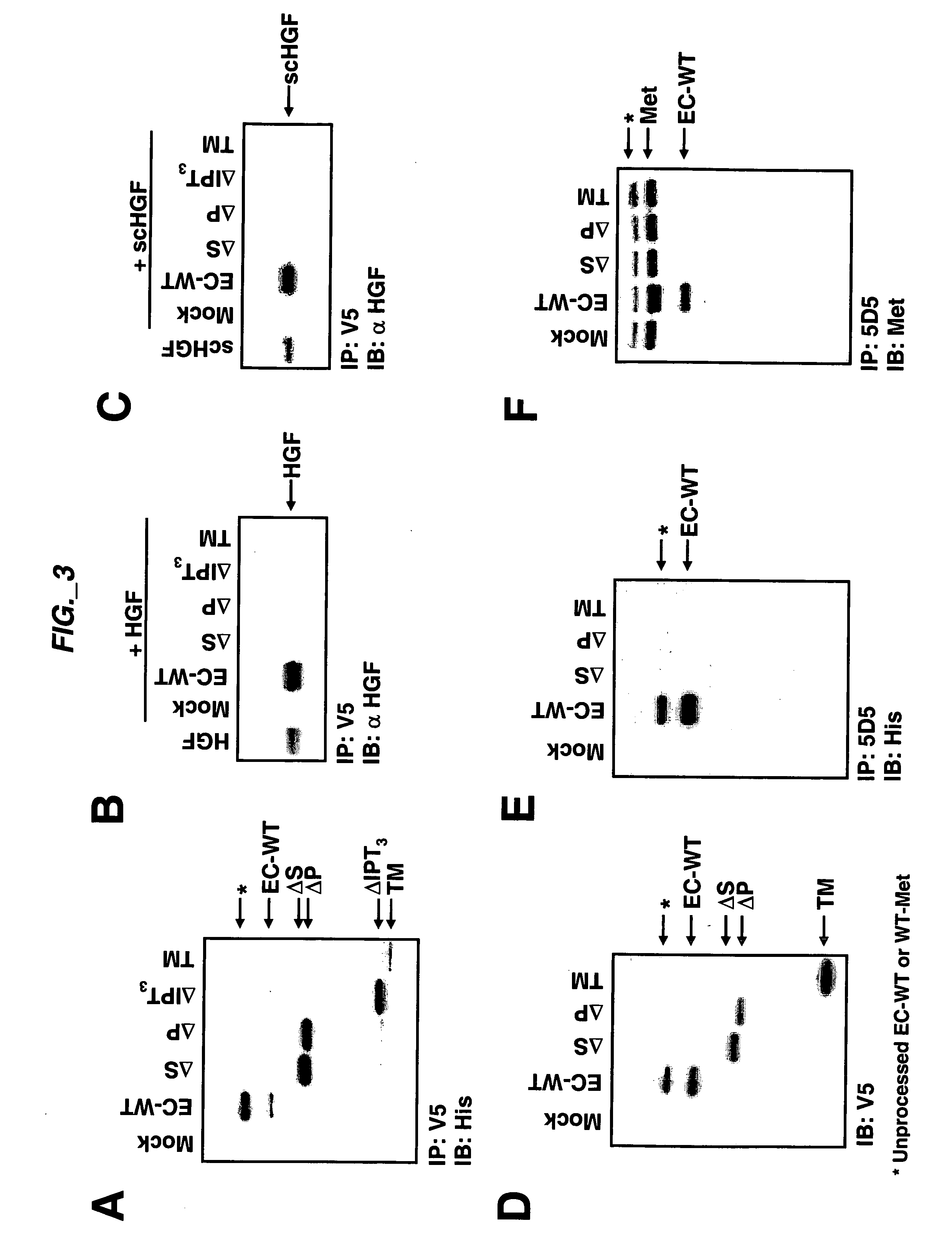Methods and compositions for inhibiting c-met dimerization and activation
- Summary
- Abstract
- Description
- Claims
- Application Information
AI Technical Summary
Benefits of technology
Problems solved by technology
Method used
Image
Examples
examples
Materials & Methods
Constructs and Recombinant Proteins
[0189] Extracellular sub-domain deletions of c-Met were constructed using conventional PCR methods. N-terminal primers containing the start of Sema, PSI, first IPT, or fourth IPT domains flanked by a KpnI site were paired with a C-terminal primer up to Met residue 959 flanked by a StuI site. c-Met was used as template and the PCR fragments for each clone were inserted into pCR-Blunt II-TOPO vector using the Zero Blunt TOPO PCR cloning kit (Invitrogen) according to manufacturer's instructions. The clones were confirmed by DNA sequencing. The constructs were then subcloned into pcDNA3.1 V5 / His vector (Invitrogen) via KpnI and EcoRV to add a tag at the C-terminus. The signal peptide of Met was added via the HindIII and KpnI sites at the N-terminus of each clone. Each clone was digested with HindIII and EcoRV and subcloned into pRK5TKneo vector via HindIII and PmeI. For EC-WT Flag and EC-WT V5 / His clones, an N-terminal primer con...
PUM
| Property | Measurement | Unit |
|---|---|---|
| Cell proliferation rate | aaaaa | aaaaa |
| Chemotherapeutic properties | aaaaa | aaaaa |
Abstract
Description
Claims
Application Information
 Login to View More
Login to View More - R&D
- Intellectual Property
- Life Sciences
- Materials
- Tech Scout
- Unparalleled Data Quality
- Higher Quality Content
- 60% Fewer Hallucinations
Browse by: Latest US Patents, China's latest patents, Technical Efficacy Thesaurus, Application Domain, Technology Topic, Popular Technical Reports.
© 2025 PatSnap. All rights reserved.Legal|Privacy policy|Modern Slavery Act Transparency Statement|Sitemap|About US| Contact US: help@patsnap.com



